We all have our quirks when it comes to cooking. I have clear mental blocks over what is and is not a complicated supper, many of which do not follow any kind of logic. I wouldn’t think twice about setting a sauce or ragu going early in the day, blipping gently, returning to it every so often for a stir and a taste, knowing that it will take hours and not inconsiderable attention before it is ready. I don’t mind at all making dough which will need proving and shaping as the afternoon wanes. I even find the act of slicing or chopping various different components meditative.
The result is neat little parcels of golden-brown crunchy breadcrumbs encasing chicken, cheese and ham
But there are processes that set off klaxons in my head: warning, warning, avoid. I don’t mind parboiling potatoes and roasting them, but boiling and mashing them goes against everything I believe in for a quick weeknight supper. Onion gravy, no problem; “proper” gravy is a no-go. I’m a law unto myself. Equally, breadcrumbing (and the associated frying) is something I find myself avoiding: it feels faffy, messy and time-consuming. In reality, it is none of these things. Until recently, though, it has put me off making the gorgeous chicken cordon bleu.
Like its more famous cousin, the chicken Kiev, chicken cordon bleu enjoyed its heyday at 1970s dinner parties. Unlike the Kiev, it didn’t enjoy the same revival as comfort or convenience food. Perhaps it’s because the gentle ooze of cheese is not as show-stopping as the spurt of garlic butter. But that is to its advantage: there is nothing sadder than cutting into a chicken Kiev and finding it hollow; the more robust cheese and ham filling poses much less of a risk.
Despite its name, chicken cordon bleu isn’t French and neither does it have anything to do with the famous cookery school or, really, the blue ribbon after which both it and the cookery school are named. The “cordon bleu” was originally a literal blue ribbon worn by the knights of L’Ordre du Saint-Esprit, which was set up by Henri III in 1578. At some point the term came to refer to both food and chefs of a particularly high standard and became a byword for quality.
Chicken cordon bleu was first referenced by name in the New York Times in an ad for United Airlines in 1967, suggesting it as an example of what luxuries their service offered. Nevertheless, strikingly similar recipes existed before, often using veal in place of chicken, and the modern version bears strong resemblance to older dishes like schnitzel and roulade, which must have acted as an inspiration or jumping-off point.
To make it, the chicken is butterflied and flattened out between Saran Wrap, using the gentle glancing thwack of a rolling pin. Swiss cheese and deli sliced ham are laid inside the thinned chicken breasts, before the whole thing is rolled up and panéed. The outside is shallow-fried, before being transferred to the oven to cook through. The result is neat little parcels of golden-brown crunchy breadcrumbs encasing chicken and melted cheese and ham.
Panéeing, or breadcrumbing, whereby you coat meat first in flour, then egg and finally breadcrumbs, is a non-negotiable part of chicken cordon bleu; it is what gives it its beautiful appearance and texture. If you set yourself up properly, it is both speedy and mess-free. You need three bowls for each of the coatings for dunking and a tray for the finished chicken. The golden rule is to use one hand for the wet coatings, and one for the dry, and you won’t end up panéeing yourself. Chicken cordon bleu is, in fact, an ideal supper: the thinning of the chicken can be done in advance, the frying is the work of moments and then it’s all into the oven for the final stint, while you wrestle bathtime or put the bins out or just have a glass of wine.
Some serve chicken cordon bleu with a cheese sauce but I don’t think it needs it. I do think it needs a good pile of fries to accompany it, though, and a generous green salad, with a dressing as mustard-laden as you can bear to cut through that rich filling.
Makes 2
Takes 20 minutes, plus chilling
Cooks 25 minutes
- 2 chicken breasts
- 2 large slices Swiss cheese
- 2 slices cooked ham, thinly sliced
- ⅓ cup plain flour
- 2 eggs
- ½ cup Panko breadcrumbs
- ¾ cup vegetable oil
- Butterfly the chicken breasts by cutting through them horizontally, stopping just short of cutting all the way, then open the breast up like a book. Place each breast between two sheets of Saran wrap and gently bash with a rolling pin — use glancing blows rather than pummeling up and down hard — to thin the meat, without tearing it.
- Place each flattened chicken breast on a new sheet of Saran wrap, smooth side down, and then lay a slice of ham across the breast, followed by a slice of cheese. Roll tightly into a neat parcel, tucking in the ends of the chicken and using the Saran wrap to help you. You can then roll them again in another sheet of Saran wrap if you would like to, tightly winding the ends, to tauten the chicken. Refrigerate for at least thirtg minutes and up to a day.
- Preheat the oven to 425°F/400°F fan. Heat the oil to 370°F in a large, high-sided frying pan, with the oil coming no more than halfway up the sides.
- Set up three dishes: one with the flour, one with beaten egg and one with the breadcrumbs. Season the flour with fine salt and ground black pepper. Unwrap the chicken parcels from the Saran wrap and dunk them in each of the coatings in turn, first flour, then egg and finally breadcrumbs.
- Fry the chicken in the hot oil for one to two minutes on each side, then transfer to a baking tray. Bake for twenty-five minutes, by which time the chicken should be thoroughly cooked through, and the cheese melted and gooey. Serve straight away.
This article was originally published in The Spectator’s UK magazine. Subscribe to the World edition here.



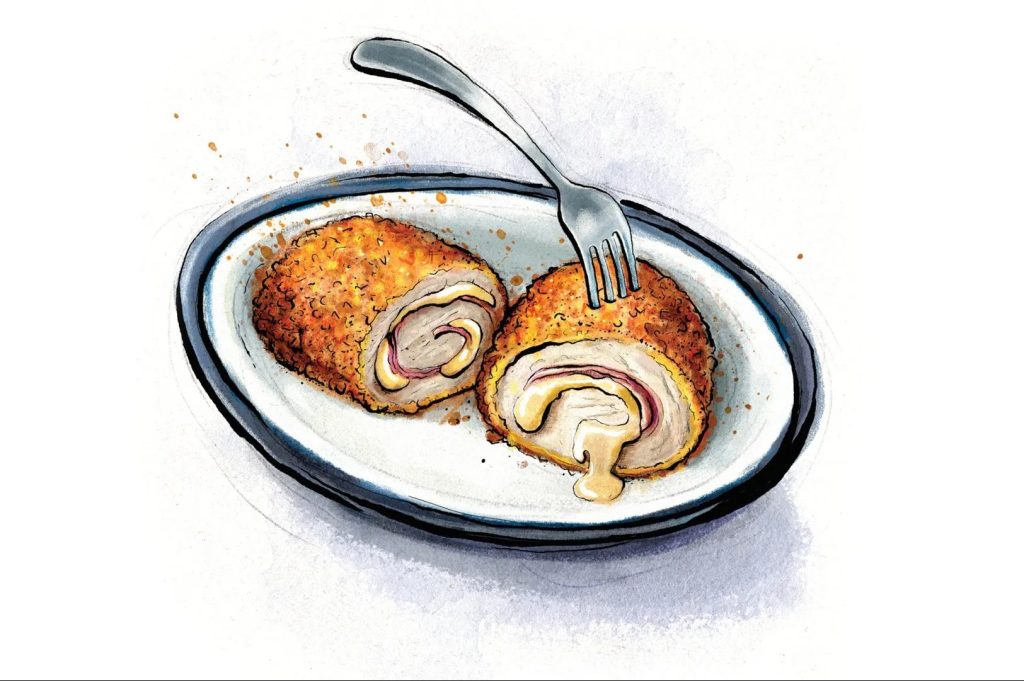







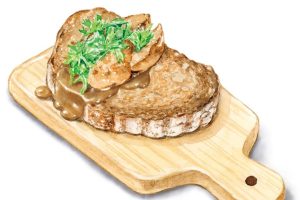

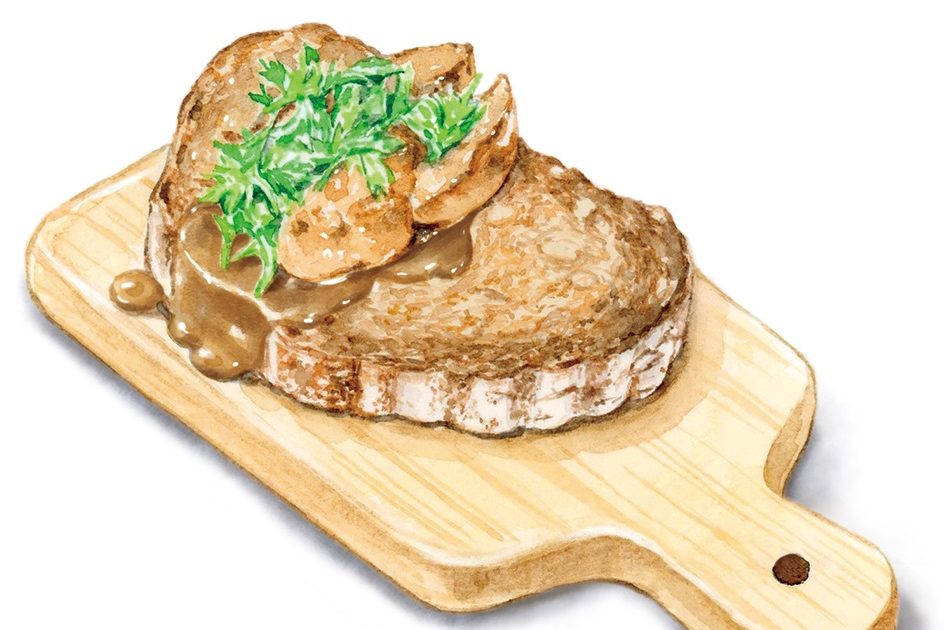
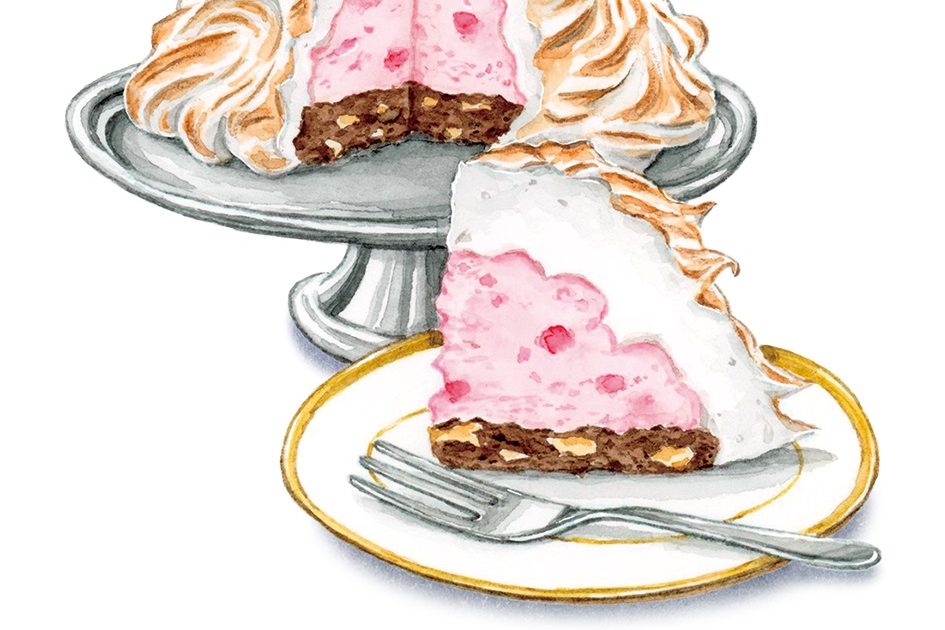
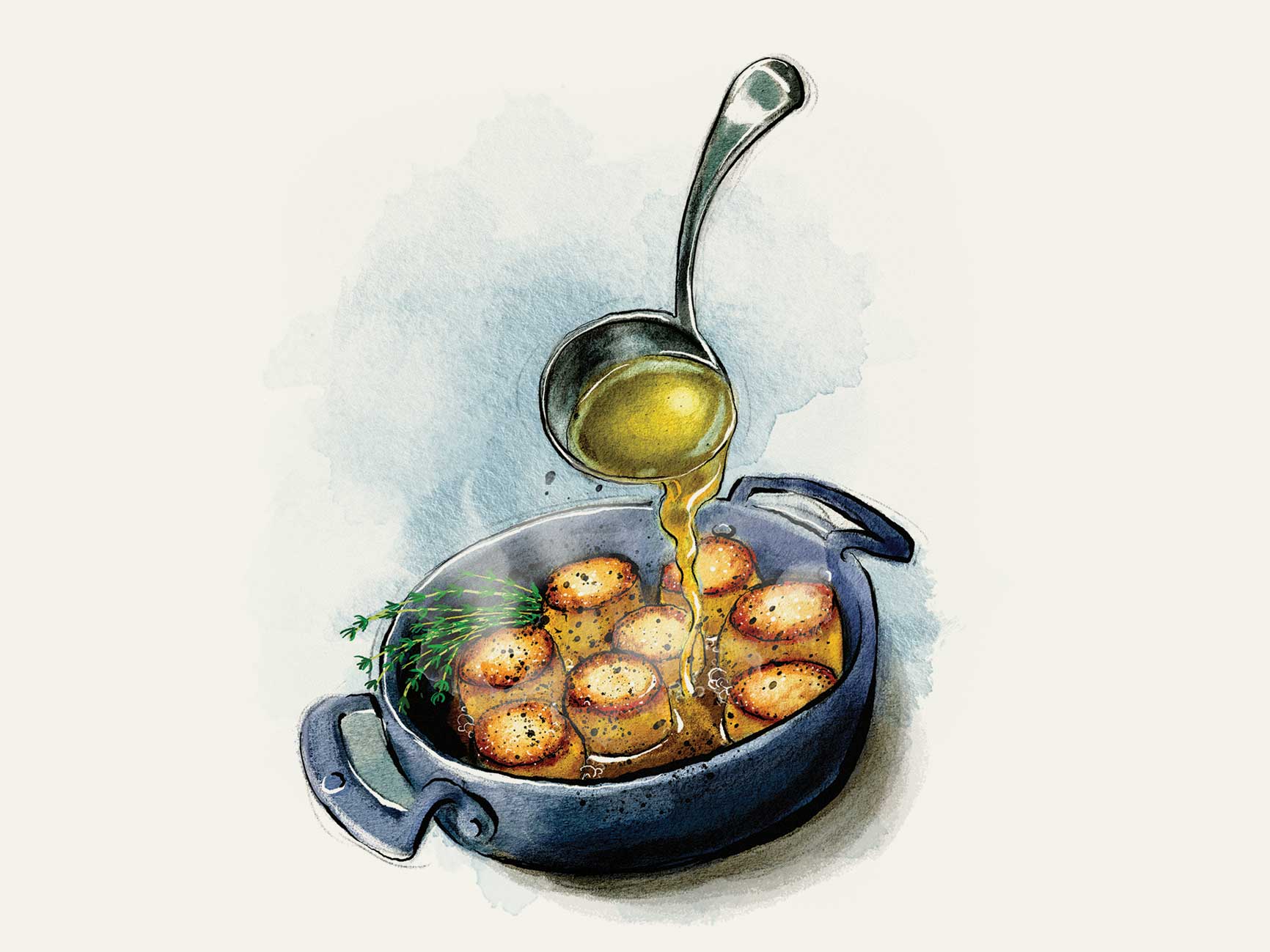
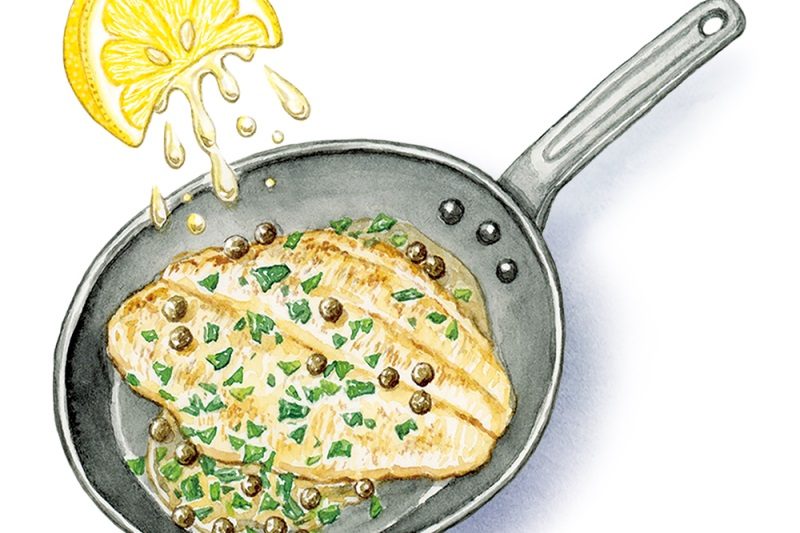
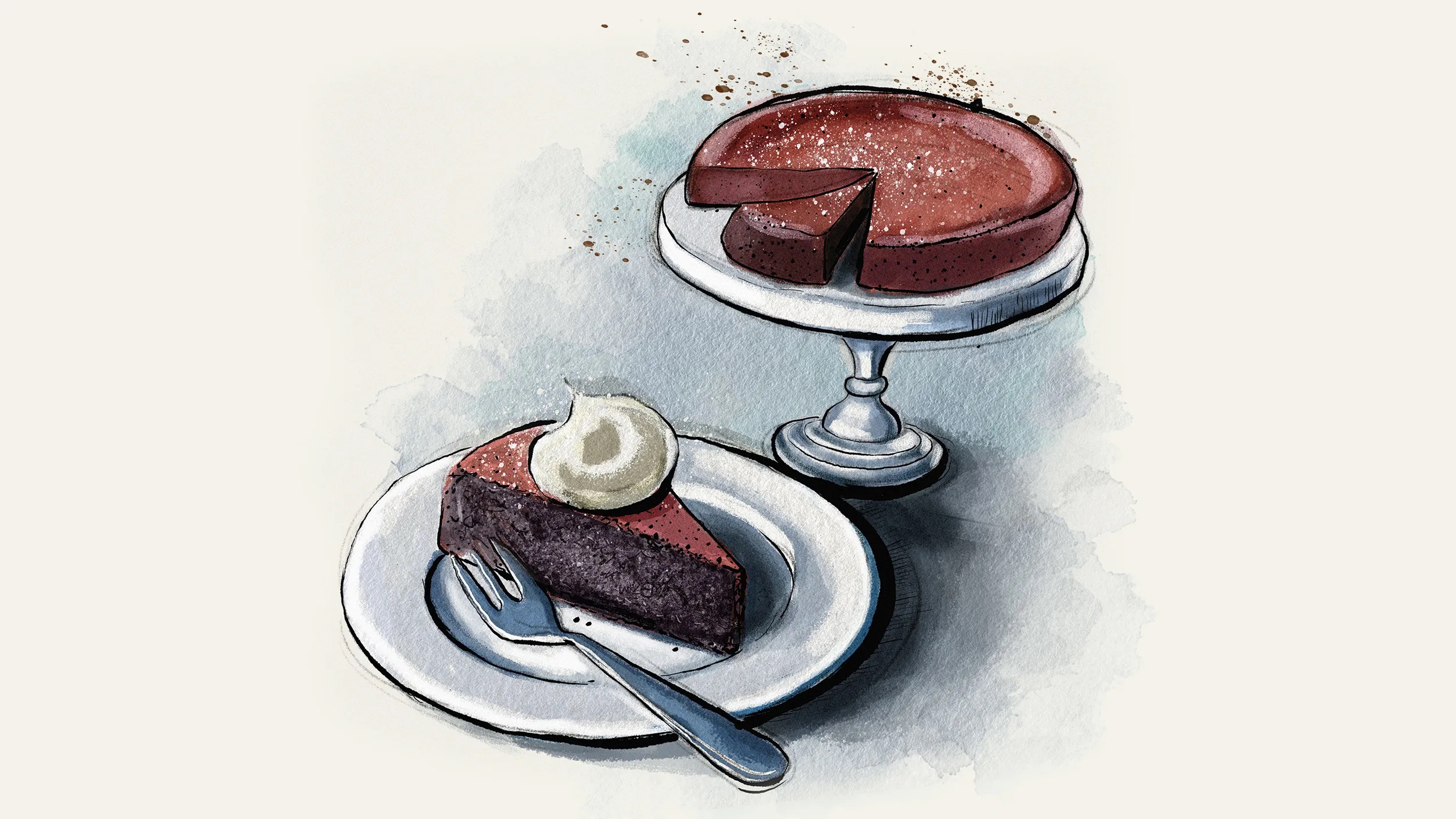
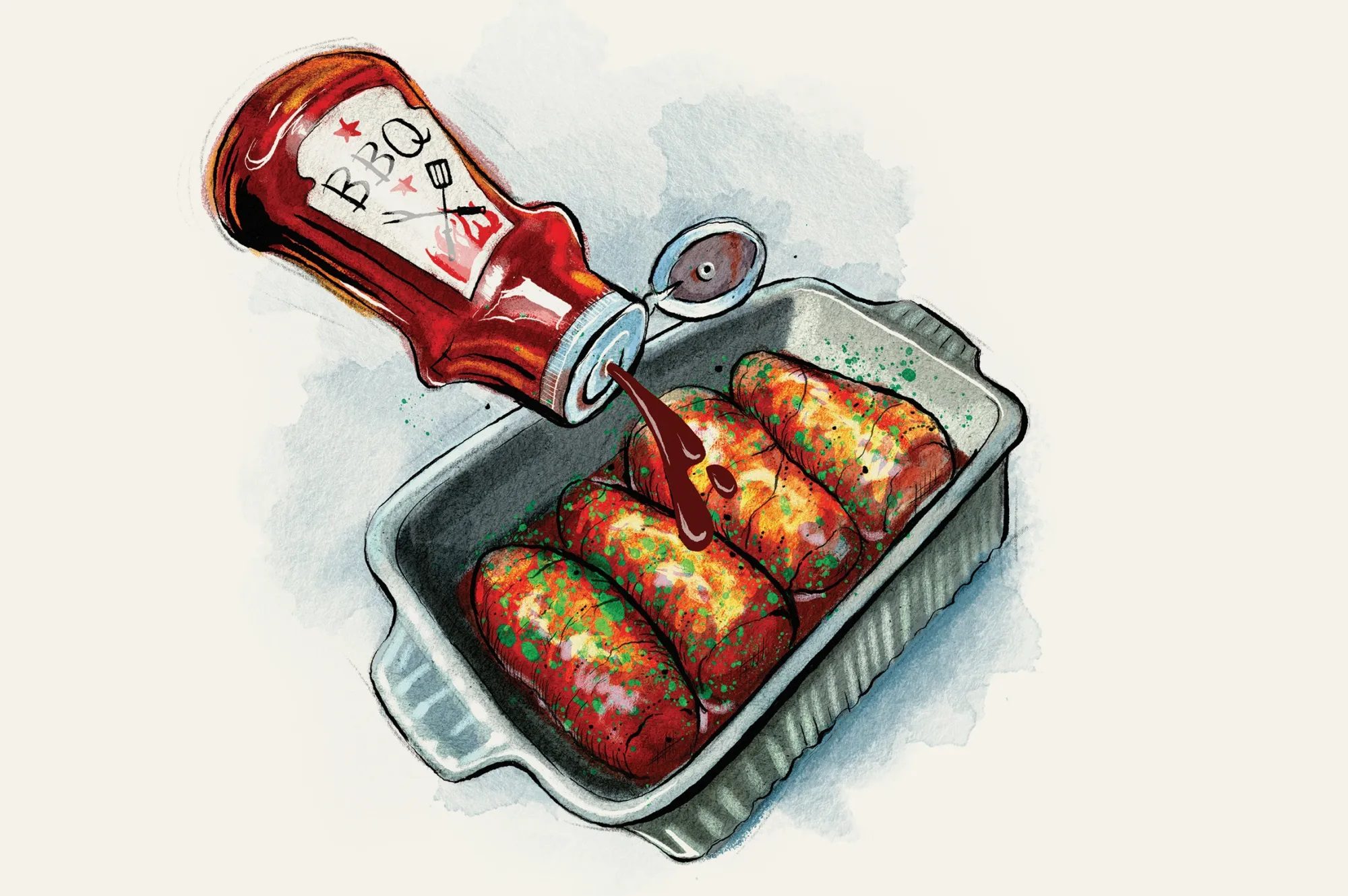







Leave a Reply